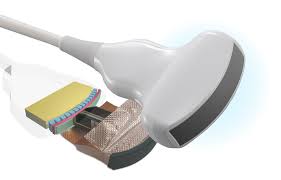MARKET OVERVIEW
Global Electron Multiplying Charge-Coupled Device (EMCCD) Cameras market is estimated to reach $29537 Million by 2031; growing at a CAGR of 6.3% from 2024 to 2031.
The global market for Electron Multiplying Charge-Coupled Device (EMCCD) cameras is making a significant impact across various industries due to their advanced imaging technology. EMCCD cameras excel in low-light, high-sensitivity imaging conditions, making them valuable in sectors like astronomy, medical diagnosis, and surveillance. They can detect even the faintest signals of light, aiding astronomers in making more precise observations and advancing space research. In medical diagnostics, EMCCD cameras offer high-resolution images for detailed analysis and early disease detection.
EMCCD cameras also benefit security and surveillance industries by providing superior low-light imaging for better monitoring and security measures. In industrial applications, they improve quality control processes by ensuring higher precision and effectiveness in manufacturing. The entertainment industry is adopting EMCCD technology to produce highly detailed content in low-light settings, pushing creative boundaries. Manufacturers are working on enhancing camera performance and reducing costs to attract more users.
These cameras will also be implemented in teaching and research applications in the education sector, training students in sophisticated image-acquisition techniques. The EMCCD technology is driving collaboration and innovation across industries, offering unique capabilities that will bring progress and benefits to all. The global EMCCD camera market is poised for significant growth and development, impacting a wide range of sectors from scientific research to industrial applications and medical diagnoses. This technology represents a new frontier of precision and clarity in imaging, becoming an indispensable tool for the future.

GROWTH FACTORS
The Electron Multiplying Charge-Coupled Device (EMCCD) Cameras market is expected to grow at a high rate in the future due to increasing demand for highly sensitive imaging solutions in scientific research, astronomy, and biomedical applications. EMCCD cameras offer enhanced sensitivity and improved signal-to-noise ratio, allowing for precise imaging in challenging environments. Advancements in imaging technologies are also driving the market growth. However, the high price of EMCCD cameras compared to regular CCD or CMOS cameras is a barrier to widespread adoption.
Specialized expertise is required in the manufacturing and maintenance of EMCCD cameras, limiting their accessibility. The development of cost-effective and user-friendly EMCCD camera systems could increase their usage across various industries. Manufacturers could create more affordable models without compromising performance to encourage wider adoption.
Efforts to improve imaging technology, lower costs, and increase user-friendliness are expected to boost the EMCCD camera market in the future. The demand for high-sensitivity imaging solutions will drive further growth in the market, leading to innovation in new applications across different fields. Despite challenges, there is considerable potential for growth in the global EMCCD camera market through technical advancements and cost reduction efforts to make the technology more accessible in various industries.
MARKET SEGMENTATION
By Type
The Electron Multiplying Charge-Coupled Device Cameras market is expected to see significant growth due to their crucial role in various fields like scientific research, medical imaging, and security surveillance. These cameras excel in capturing images in low light conditions and amplifying signals to detect even faint light sources for clear images. The market is segmented into black and white, and color cameras, each suited for specific applications like astronomy, scientific research, biological research, and medical diagnostics.
The global market for EMCCD cameras is expected to grow as industries harness their benefits, with a focus on compact, efficient, and affordable designs. The rise in demand is also driven by security concerns worldwide, increasing the need for reliable surveillance equipment. These cameras function effectively from dusk to dawn, making them ideal for security and defense applications.
In the medical field, EMCCD cameras have revolutionized diagnostic imaging by offering high sensitivity and resolution for accurate and early detection of medical conditions. Integration of these cameras into diagnostic equipment is expected to increase in the future as healthcare systems aim to improve patient outcomes.

By Application
EMCCD cameras are highly sensitive with low noise, making them valuable in various fields, particularly in laboratories for capturing low-light images with precision in biology and astronomy research. In industries like semiconductor manufacturing, EMCCD cameras enhance imaging in poor lighting conditions for better quality control.
These cameras also find versatile applications in areas like surveillance, where they excel in low-light conditions to enhance security in critical areas. Their high sensitivity and resolution make them ideal for night surveillance and other demanding tasks.
With their ability to detect faint signals clearly, EMCCD cameras are seen as revolutionary in scientific research and industrial applications, contributing to ground-breaking discoveries and improving quality control processes. Growth in the use of EMCCD cameras is expected due to their numerous applications across various fields.
REGIONAL ANALYSIS
The global market for Electron Multiplying Charge-Coupled Device (EMCCD) cameras is expected to grow significantly in the long term. These cameras are highly sensitive and can capture images in low lighting conditions, making them popular in various sectors such as astronomy, medical imaging, and scientific research. The market can be divided into regions like North America, Europe, Asia-Pacific, South America, and Middle East & Africa, each presenting unique opportunities and challenges for growth.
North America currently has the largest market share for EMCCD cameras, with the U. S. leading in research and technological advancements. Europe, including countries like the UK, Germany, France, and Italy, also has a strong market due to its commitment to scientific development. The Asia-Pacific region, particularly China and Japan, is rapidly growing due to increased healthcare spending and research funding.
South America and the Middle East & Africa regions are also poised for growth, with countries like Brazil, Argentina, and South Africa investing in healthcare and research infrastructure. As regions invest in technology and scientific research, the demand for high-performance imaging devices like EMCCD cameras is expected to rise, driving further innovations and advancements in the industry.

KEY INDUSTRY PLAYERS
The Electron Multiplying Charge-Coupled Device (EMCCD) Cameras market is expected to experience significant growth in the next few years. These cameras are crucial for detecting low light levels with high sensitivity, making them essential for various scientific and industrial applications. Key players in the industry are constantly upgrading their cameras to improve performance and functionality through research and development investments.
Technological advancements in data processing, storage solutions, and the integration of artificial intelligence and machine learning algorithms are expected to enhance the capabilities of EMCCD cameras. The use of these cameras in emerging fields like astronomy, biomedical research, and security surveillance further drives market growth. In astronomy, EMCCD cameras help capture high-resolution images of celestial objects, aiding in the discovery of new planets and galaxies. In medical diagnostics, these cameras improve diagnosis and prognosis through clearer and detailed images.
The competitive landscape of the EMCCD Cameras market is likely to lead to collaborations between key players and other technology companies to develop integrated solutions. The continuous technological advancements and expanding applications point towards a promising future for EMCCD cameras. These cameras are set to play a significant role in scientific research and security applications, showcasing their importance in our technology-driven world.
REPORT SCOPE AND SEGMENTATION
|
Attributes |
Details |
|
Market Size By 2031 |
USD 29537 Million |
|
Growth Rate |
CAGR of 6.3% |
|
Forecast period |
2024 - 2031 |
|
Report Pages |
250+ |
|
By Type |
|
|
By Application |
|
|
By Region |
|
|
Key Market Players |
|



_page-000171.jpg)
_page-000177.jpg)
_page-000176.jpg)
_page-000175.jpg)
_page-000174.jpg)


8.jpg)



 APAC:+91 7666513636
APAC:+91 7666513636





